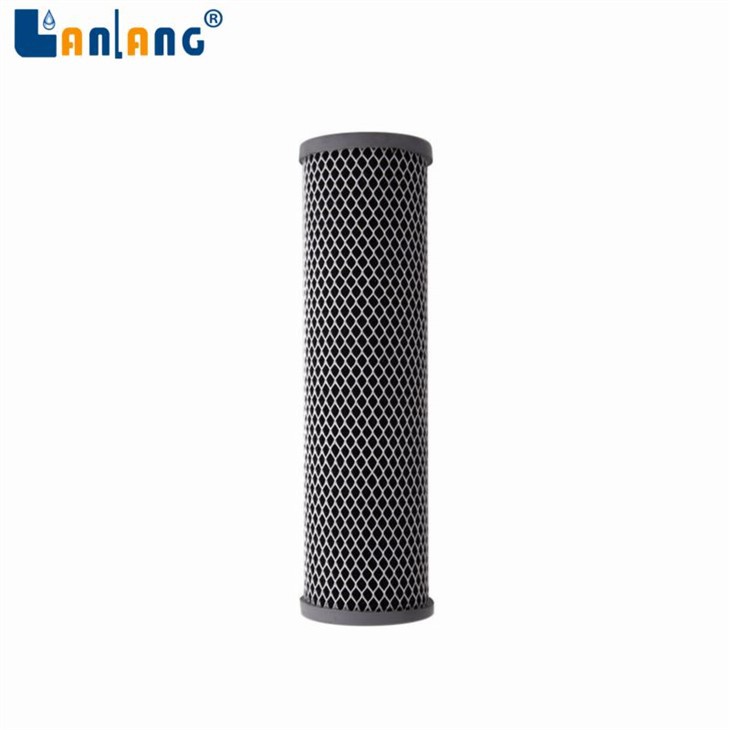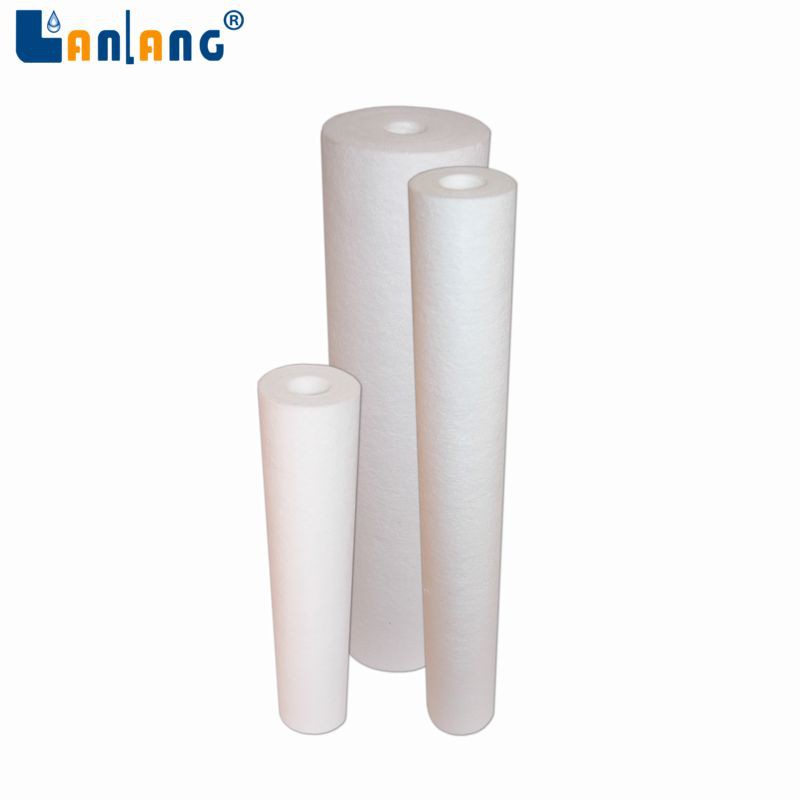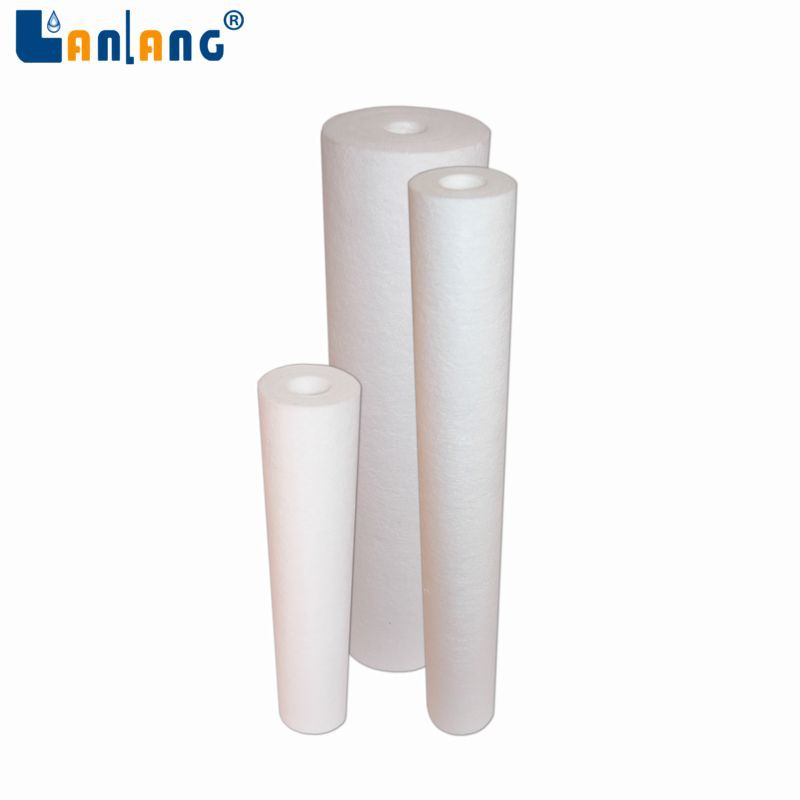Determining how often to replace filter cartridges is a crucial aspect of maintaining an efficient and effective filtration system. As a leading supplier of filter cartridges, I understand the importance of this decision for both residential and commercial users. In this blog post, I'll delve into the factors that influence the replacement frequency of filter cartridges and provide some general guidelines to help you make an informed choice.

Factors Affecting Filter Cartridge Replacement Frequency
Water Quality
The quality of the water being filtered is one of the most significant factors in determining how often filter cartridges need to be replaced. Water sources can vary widely in terms of their chemical composition, sediment content, and microbial load. For instance, water from a well might contain high levels of sediment, iron, and sulfur, which can quickly clog a filter cartridge. On the other hand, municipal water may have a lower sediment load but could contain chlorine, fluoride, and other chemicals that need to be removed.
If your water has a high sediment content, you'll likely need to replace sediment filter cartridges, such as the Melt Blown PP Water Filter Cartridge, more frequently. These cartridges are designed to trap particles of various sizes, and as they accumulate sediment, their effectiveness decreases. Similarly, if your water contains a lot of organic matter or contaminants, carbon filter cartridges, like the Carbon Water Filter Cartridge, may need to be replaced more often to ensure they continue to adsorb impurities effectively.
Flow Rate
The flow rate of water through the filter system also plays a role in filter cartridge replacement frequency. A higher flow rate means more water is passing through the cartridge in a given period, which can lead to faster clogging or depletion of the filter media. For example, in a commercial setting where large volumes of water are used, such as a restaurant or a car wash, the filter cartridges will likely need to be replaced more frequently compared to a residential setting with a lower flow rate.
It's important to choose a filter cartridge that can handle the flow rate of your water system. If the flow rate is too high for the cartridge, it can cause premature clogging and reduce the overall lifespan of the filter. Conversely, if the flow rate is too low, the filter may not be utilized efficiently, and you may end up replacing the cartridge before it has reached its full capacity.
Usage Patterns
How often the water filtration system is used can significantly impact the replacement frequency of filter cartridges. A household with a large family that uses a lot of water for drinking, cooking, and bathing will put more strain on the filter cartridges than a single-person household with lower water usage. Similarly, a business that operates 24/7 will require more frequent filter cartridge replacements than one that is only open during regular business hours.
In addition to the overall volume of water used, the pattern of usage can also matter. For example, if you have a high-demand period, such as a weekend when you have guests over, the filter cartridges may experience a higher load during that time. This can accelerate the clogging or depletion of the filter media and require more frequent replacements.
Type of Filter Cartridge
Different types of filter cartridges have different lifespans and replacement requirements. Sediment filter cartridges, which are designed to remove physical particles from the water, typically need to be replaced more frequently than carbon filter cartridges. This is because sediment can quickly build up in the cartridge, reducing its flow rate and filtration efficiency.
Carbon filter cartridges, on the other hand, are designed to adsorb chemicals, odors, and organic compounds from the water. Their lifespan depends on the amount of contaminants in the water and the capacity of the carbon media. Some carbon filter cartridges can last for several months, while others may need to be replaced every few weeks.
There are also specialized filter cartridges, such as reverse osmosis membranes and UV filters, which have their own unique replacement schedules. Reverse osmosis membranes are very sensitive to contaminants and may need to be replaced every 2 - 3 years, depending on the water quality and usage. UV filters, which use ultraviolet light to disinfect the water, typically require the UV lamp to be replaced annually to ensure effective disinfection.
General Guidelines for Filter Cartridge Replacement
While the specific replacement frequency of filter cartridges depends on the factors mentioned above, here are some general guidelines to help you get started:

- Sediment Filter Cartridges: These cartridges should typically be replaced every 1 - 3 months, depending on the sediment content of the water and the flow rate. If you notice a significant decrease in water pressure or a change in the water clarity, it may be a sign that the sediment filter cartridge needs to be replaced.
- Carbon Filter Cartridges: Carbon filter cartridges can last anywhere from 3 - 6 months, depending on the water quality and usage. If you detect a change in the taste or odor of the water, it may be time to replace the carbon filter cartridge.
- Combination Filter Cartridges: Some filter cartridges combine sediment and carbon filtration in a single unit. These cartridges usually have a similar replacement schedule to carbon filter cartridges, but it's important to follow the manufacturer's recommendations.
It's important to note that these are just general guidelines, and the actual replacement frequency may vary depending on your specific circumstances. To get the most accurate information, it's recommended to refer to the manufacturer's instructions for your filter cartridges.

Monitoring and Maintaining Your Filter Cartridges
To ensure that your filter cartridges are replaced at the right time, it's important to monitor their performance regularly. Here are some tips for monitoring and maintaining your filter cartridges:

- Check the Water Pressure: A significant decrease in water pressure can be a sign that the filter cartridge is clogged and needs to be replaced. You can use a pressure gauge to monitor the water pressure before and after the filter system.
- Inspect the Cartridge: Periodically inspect the filter cartridge for signs of wear, damage, or clogging. If you notice any discoloration, debris buildup, or physical damage to the cartridge, it's time to replace it.
- Keep a Replacement Schedule: Create a schedule for replacing your filter cartridges based on the manufacturer's recommendations and your usage patterns. Set reminders on your phone or calendar to ensure that you don't forget to replace the cartridges on time.
Conclusion
Determining how often to replace filter cartridges is a complex decision that depends on several factors, including water quality, flow rate, usage patterns, and the type of filter cartridge. By understanding these factors and following the general guidelines provided in this blog post, you can ensure that your filter cartridges are replaced at the right time to maintain an efficient and effective filtration system.
As a trusted supplier of Water Filter Cartridge Series, I'm here to help you find the right filter cartridges for your needs and provide you with expert advice on replacement frequency. If you have any questions or need assistance with choosing the right filter cartridges, please don't hesitate to contact me. We're committed to providing high-quality products and excellent customer service to help you achieve the best water filtration results.
References
- "Water Filtration Systems: A Comprehensive Guide." Water Quality Association.
- "Filter Cartridge Maintenance and Replacement." Filtration and Separation Magazine.
- Manufacturer's instructions for various filter cartridges.
